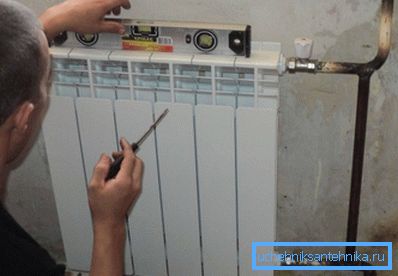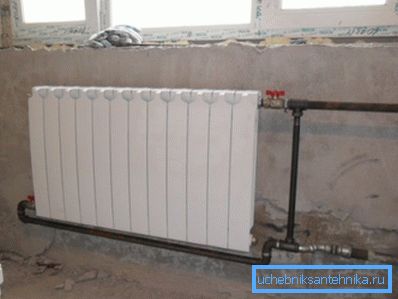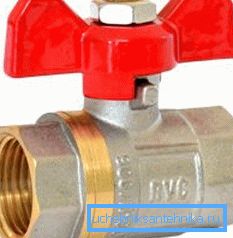What kind of heating is better for an apartment: choose
The topic of this article is heating equipment for an apartment connected to central heating. We will find out which radiators, pipes and valves it is better to purchase, and we will try to substantiate our opinion. So go.

Conditions
Let's start with the requirements that the CO imposes on materials.
The nominal parameters of the heating system in the winter months are as follows:
- Pressure - 3-4 kgf / cm2.
- Temperature - 40-95 degrees.
Curiously: 95 С - the limitation of the maximum temperature contained in the SNiP for any engineering network of a residential building. In kindergartens, an even stricter limitation applies: there the coolant cannot heat up above +37 C.
In theory, the operating temperatures and pressures declared for any polymeric materials overlap these with a solid margin. But, as always, there are nuances.
At the peak of the winter cold, with a large number of complaints of low temperature in apartments, the work of an elevator assembly without a nozzle, with a muffled intake, is sometimes practiced. Yes, this is abnormal for heating; however, in a critical situation, it is often the only alternative to a bunch of administrative proceedings.
In this scheme, the radiator does not get a mixture of water from the supply and return pipelines, but directly feed from the road. And its temperature can reach not 95, but 150 degrees.
The question of what is better for heating - metal-plastic or polypropylene is made senseless: for both materials, heating to 150 C will mean, if not immediate destruction, then certainly accelerated degradation.
In addition, in a number of situations in the CO, water strikes may occur.
The reasons?
- The sharp opening of house valves at start-up will lead to the fact that at the front of the water filling the contour there will no longer be 3-4, but 20-25 atmospheres.
- The torn off valve of the screw valve, installed against the arrow, is capable of causing a continuous series of water hammer.

Moreover, there is another subtlety. For example, for PN20 polypropylene pipes, the maximum working pressure is 20 atmospheres at +20 C. But when heated to +90, it will drop to 7-9 atmospheres.
From here - quite obvious instruction: from plastics with a working temperature of up to 95 ° C in the central heating system, it is better to refuse completely. Our choice is metal.
Note: this is not the case for autonomous systems. If you ask the author to name the best heating for the dacha - he will vote for polypropylene with both hands.
Selection of materials
So, what kind of heating is better for such harsh conditions?
Pipes
Black steel
The most popular option is black steel pipes for welding.

The main motive, inclining towards him the owner of the apartment - a reasonable price per meter, coupled with a quick (and also relatively inexpensive) installation. We give the average cost of material for popular sizes.
| The size | Cost per meter, rubles |
| DM 15x2.8 | 56 |
| DU 20x2,8 | 78 |
| DM 25x3.2 | 100 |
| DU 32x3.2 | 129 |
The main disadvantage of black steel is that it will rust on contact with moist air. Heating systems of apartment buildings often spend a significant part of the summer dropped for repair of valves in them. As a result, the actual resource of the trouble-free service of risers and liners rarely exceeds 10-15 years.
Galvanized
Much more durable (but more expensive) zinc. The author has repeatedly opened the heating pipes in stalinka, made of galvanized pipe: their state after half a century of work was no different from the state of new pipes.
Alas, there are problems here. Zinc can not be cooked: while the zinc coating burns, leaving the seam unprotected. Cutting the threads and fitting the sizes of the pipes is very tedious and therefore expensive.

Stainless steel
The last drawback is completely devoid of corrugated stainless steel.
What can you tell about it to a potential buyer?
- The pipes easily bend with a turning radius equal to their own diameter.
- Connections are made by quick-tightening fittings for pipes with heat-resistant silicone gaskets. The tool is a pair of wrenches.
- The working temperature reaches 150 C. The maximum allowable pressure is 50 kgf / cm2.
Alas, you have to pay for everything. In this case, literally, in money: the running meter of the pipe of the most running for heating, 20 mm in size, from the Korean manufacturer Kofulso will cost about 200 rubles; German Rehau is almost twice as expensive.

Radiators
Which heaters are better to use when installing apartment heating with your own hands? Two options are possible.
The cheaper of them is a home-made register of heating, which is a few large-diameter pipes connected by bridges. It attracts not only cheap, but also easy care: to erase dust from the pipes is not difficult.
The main drawbacks of the register are the unassuming appearance and relatively small heat transfer: with the same heat flux as that of a ten-section aluminum radiator, the register must be twice as large in size.

By the way: the register has analogues of factory production - steel tubular radiators. They look more presentable, they are noticeably more expensive than an improvised heater, and they give as little heat per unit volume.
A more robust solution is bimetallic radiators, which are a core of corrosion-resistant steel and a shell with developed aluminum fins. They combine high mechanical strength with excellent heat transfer to the section and excellent design.
Valves
How can I answer the question which heater tap is better?
Here are some suggestions for valves:
- Materials - stainless steel or brass. The silumin ducts often break during installation. By the way, this is why it is better to prefer the brass body without chrome plating: under the chrome, the same fragile powder metal can be hidden.
- Valves - ball only. The time of the screw products has passed irrevocably.

Where to put the valve?
- On both liner to the radiator. One of the valves can be replaced by a choke or thermal head, allowing you to adjust the heat transfer.
- On the jumper. Shutting it down, you maximize the heat transfer of the device by letting the entire coolant flow through it.
Warning: you can not simultaneously block the liner and jumper. If you do this, in a short time an angry locksmith will come to you and begin to say offensive and angry words right in your face.

Conclusion
As you can see, the question of which heating system is better for an apartment building, we can expect a completely unambiguous answer. Our choice - bimetallic radiators on the linings of corrugated stainless steel.
As always, additional information will be offered to the reader by the attached video. Successes!